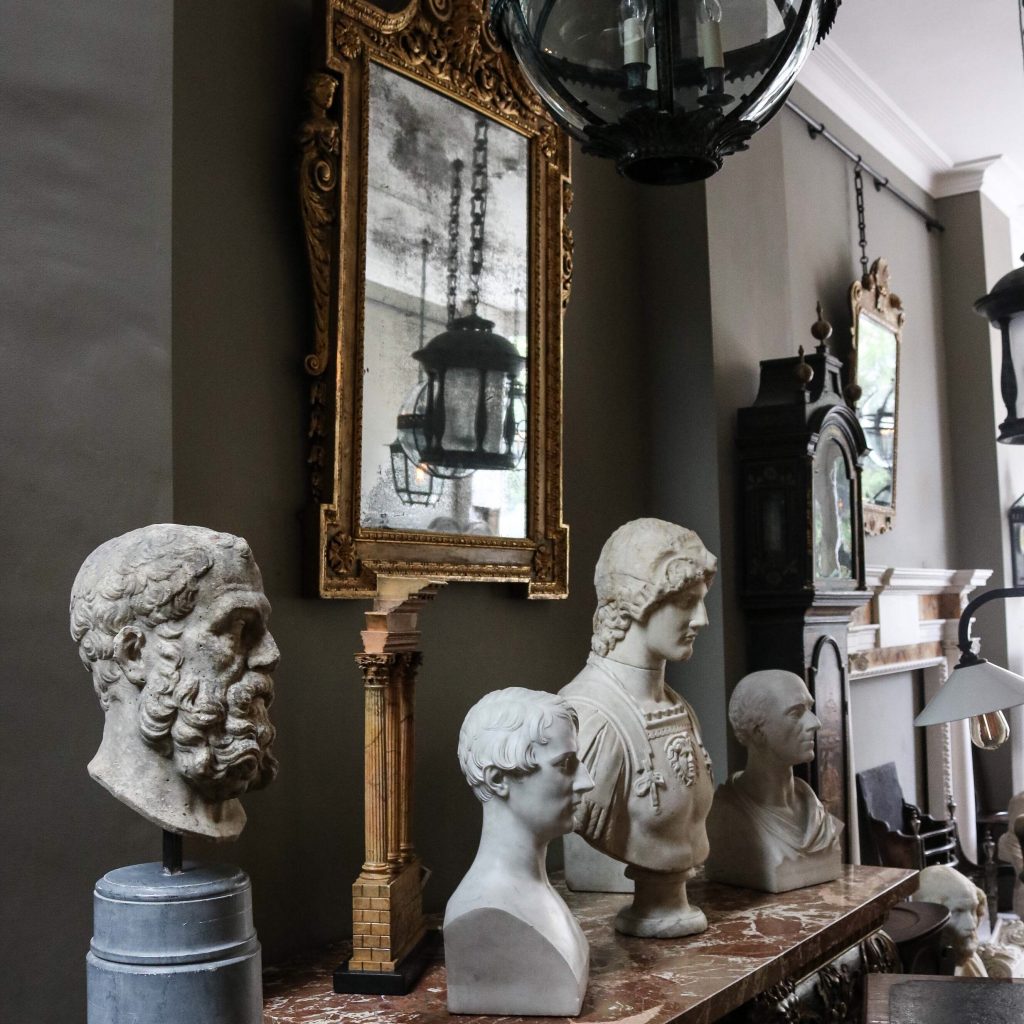Some of the wisest words are those carried down through generations. We only have to look to the Ancient philosophers to find enlightening advice. Ahead of Masterpiece week we have changed our antique chimneypieces in the London showroom and one piece in particular has a constant carved reminder of some sage advise.
There’s Wisdom Within the Carving of Stone.
22 June 2018

Antique and Ancient Busts including a 17th century bust of Solon, to the left, one of the seven sages of Ancient Greece, the founder of democracy.

The Aesop’s fable of the ‘Fox without a tail’ is carved within the centre tablet of an 18th Century Palladian statuary marble fireplacewith full rounded siena marble columns, after an original model by Sir Henry Cheere.
Aesop was an Ancient Greek slave and story teller who lived between 620 and 564 BCE. In the tradition of great stories and songs his stories descended through time by oral account. It was three centuries after Aesop died that the fables were actually recorded in writing. Later with the development of printing they became one of the earliest books to be translated and circulated around the world and still popular to this day.

The well carved relief of this central frieze depicts Aesop’s fable of ‘The Three Foxes’ A fox loses his impressive tail in a trap, and in his shame and ridicule: both of his ‘diminished’ appearance and lack of instinct, he tries to convince all the other foxes that being tail-less is the best way to live. One of the Elder foxes steps forward, unveiling the masked intention behind the advice of the fox,
“I rather think, my friend, that you would not have advised us to part with our tails, if there were any chance of recovering your own.”
The moral of the tale is to distrust advice from those who stand to gain.

This magnificent mantel was made in the 1770s after Henry Cheere closed his workshop, possibly by one of his ex-employees. After closing his yard Henry Cheere sold all his original terra cotta models in auction in 1770, many of which were bought by his ex-foreman Richard Hayward (1728-1800) who had started his own business making fireplaces. The original model was exhibited in1766 at the Society of Arts by William Collins (1721-1793) who was Cheere’s top modeller.

The mantel came from Sir James Cayzer’s home ( a close friend of the Queen Mother) Thriepley House, Dundee, Scotland which dates from the 1800.

Aesop’s fables were first printed in English by William Caxton in 1484, from his own translation made from the French. Originally it is believed that Aesop’s fables were used as an allegory to disguise social and political criticisms and only later were used as parables for Children’s literature. But with each story we can be reminded of wisdom that we may have been read to as a child and can remind ourselves today.



